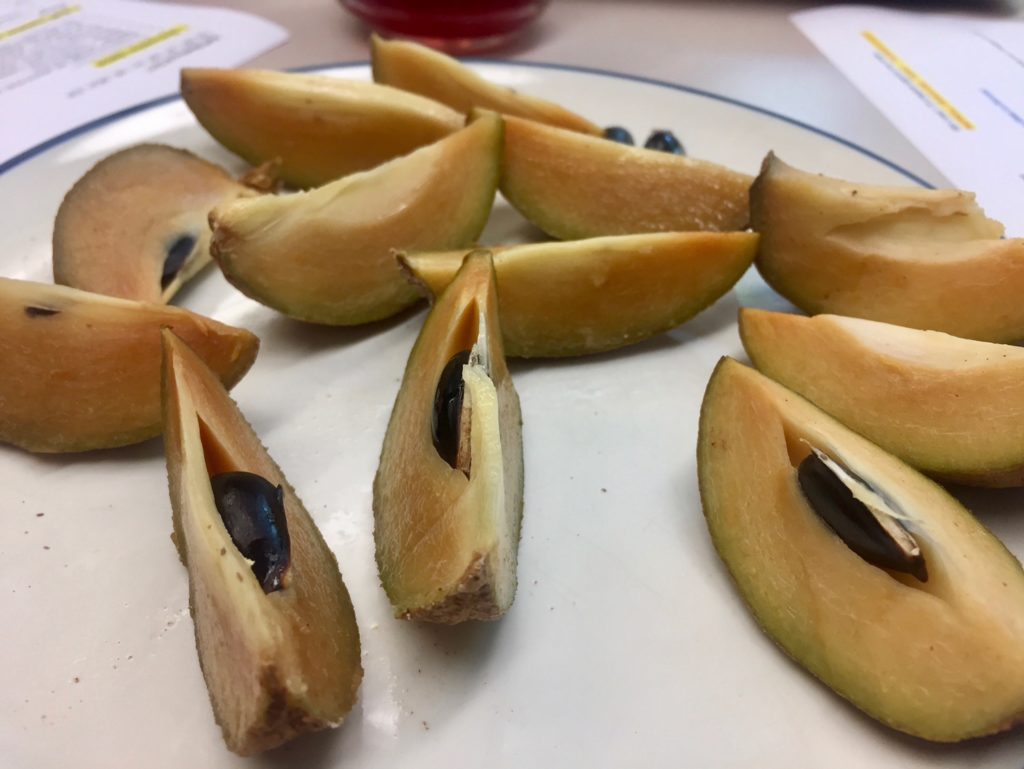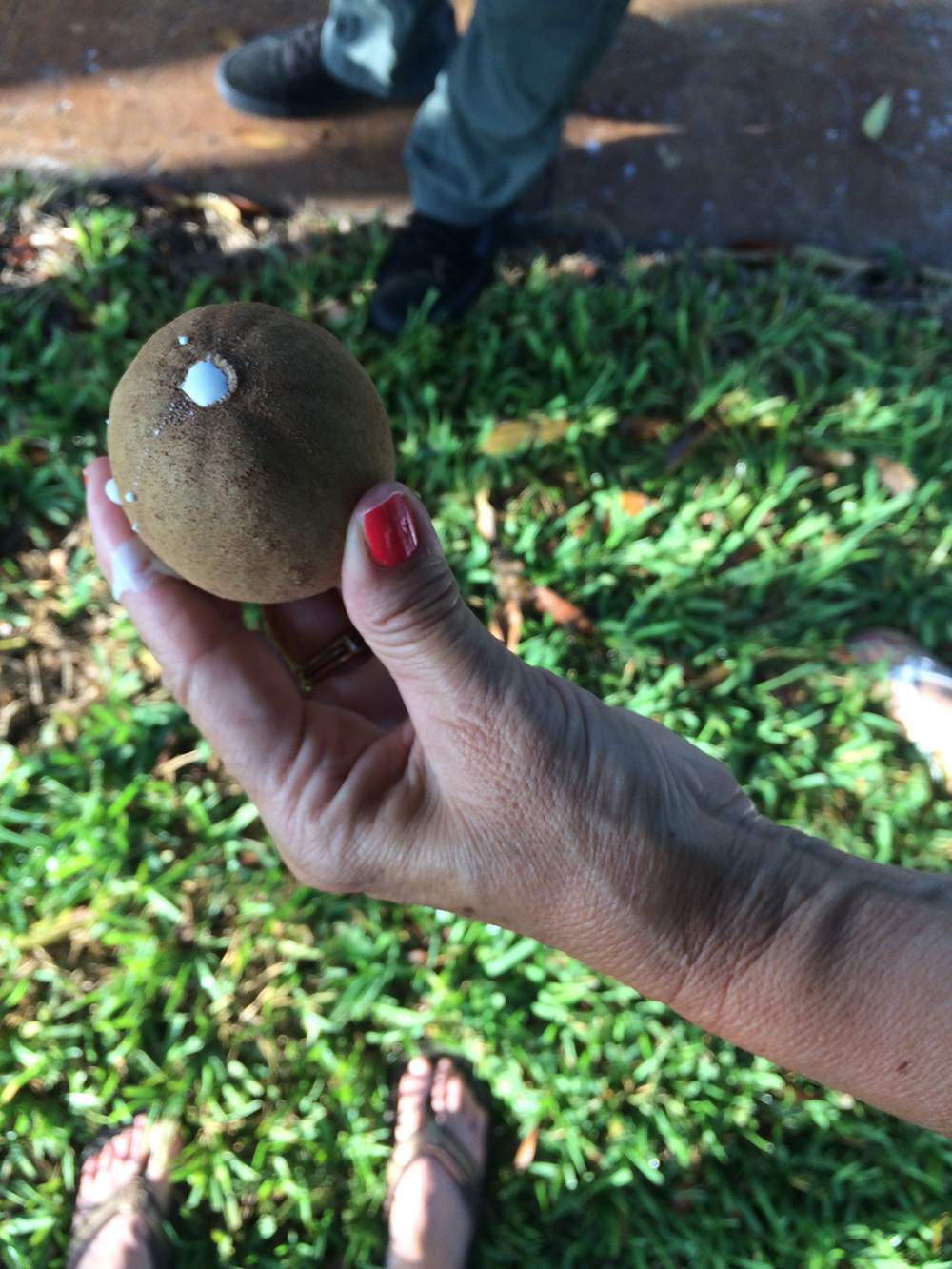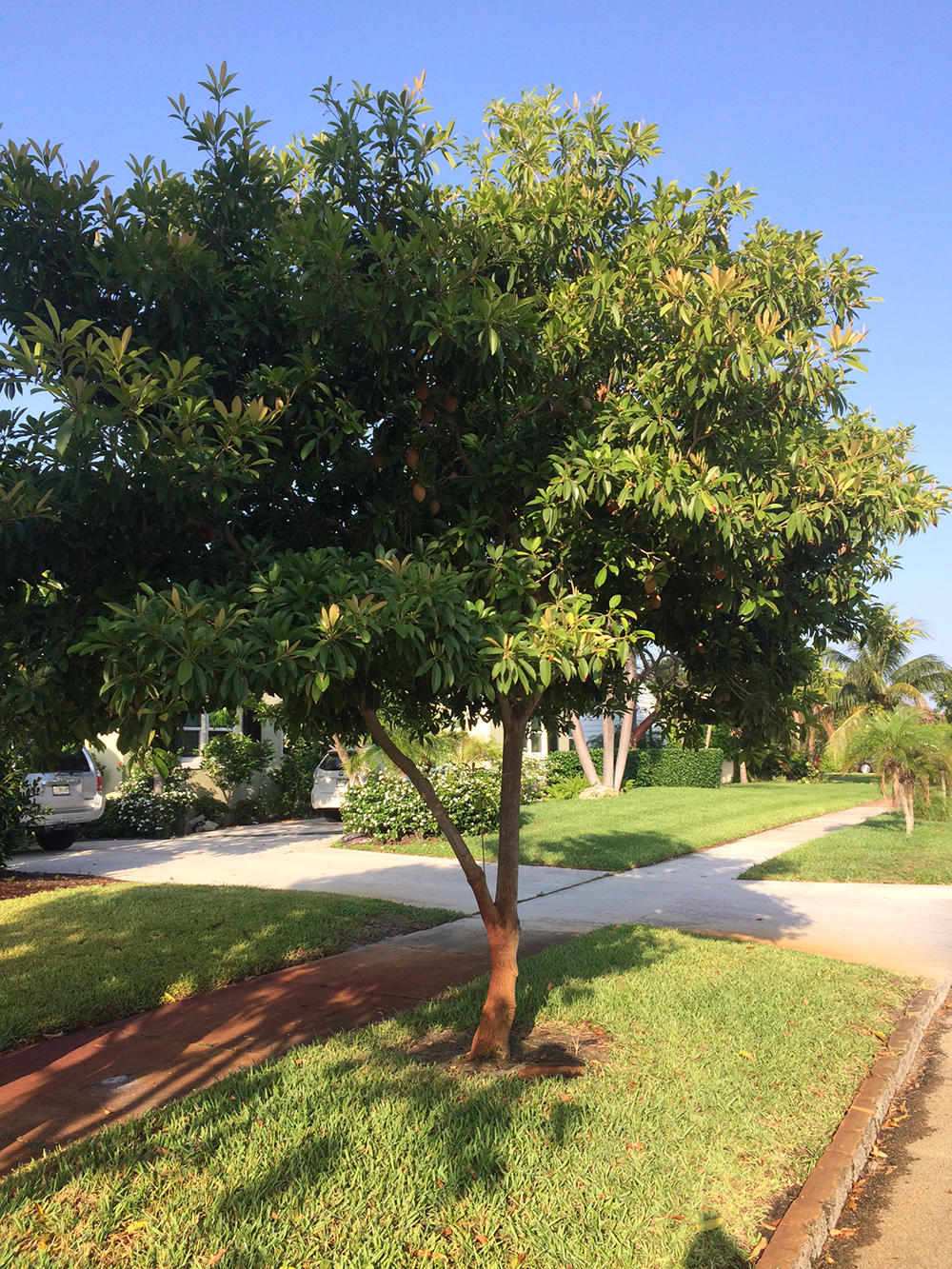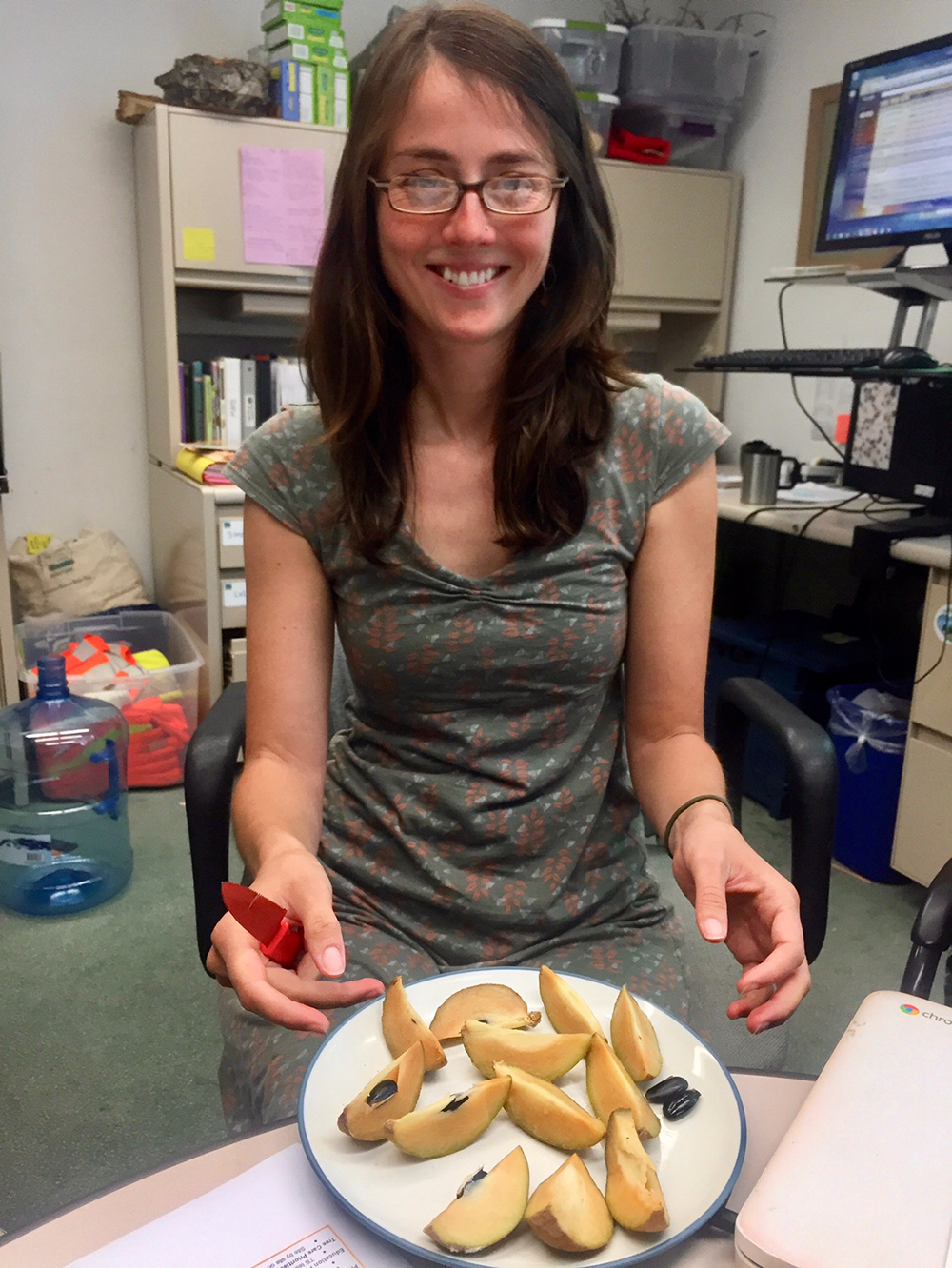- About Us
- Our Work
- Tree Info
- Get Involved
- Blog
- Volunteer
- Support Us
By Canopy Team on July 10, 2017

It’s best to eat the sapodilla fruit when they are soft and the flesh is the color of brown sugar.
Welcome to the first installment of Canopy’s Summer Travel Series! Follow along with us as we journey to the southern US, Central America, and beyond, encountering a diverse range of fun and unique trees. New stories from the Canopy team published every other week.
Our very first post is by Education Manager Natalie Brubaker, who offers a peek into her trip to Florida and her encounter with a very interesting fruit tree.
P.S. Are you traveling this summer? We’d love to see your tree photos and hear your stories! Email to [email protected] or tag us on Facebook or Instagram.
This summer, I made my yearly trip to West Palm Beach, Florida to visit my grandmother and extended family. My dad’s sisters are big-time gardeners, and I enjoy geeking out with them about their veggies and fruit trees. My Aunt Heather is one papaya tree away from having her own arboretum of exotic and native Florida fruit trees.

The highlight this visit was the sapodilla (Manilkara zapota), or “milk fruit tree” as my brother calls it. He was a tad disgusted when our aunt pulled the fruit from the branch and a milky white liquid dripped all over the sidewalk. The latex is known as “chicle” and was an ingredient in chewing gum until it was replaced by synthetic alternatives.

The sapodilla is native to Mexico and Central America and grows well in the subtropical climate of southern Florida. Sapodilla are evergreen and grow to a medium height, perfect as a landscape or street tree. They can handle prolonged drought, are fairly pest resistant, but cannot withstand freezing temperatures.

I brought back a handful of sapodilla fruit to Canopy for a staff taste test. We discovered that the fruit needs to be very ripe before it can be enjoyed. Anwyn, Uriel, and I made the mistake of enthusiastically biting into unripe slices and our mouths felt like they had been covered in a chalky coating. Apparently, this is a result of a high level of saponin, an astringent chemical compound similar to tannins, which breaks down over time. Maika was curious and intentionally tried an unripe piece, while Shannon heeded the warning.

The ripe fruit, however, was delicious! It tasted liked syrup or brown sugar and had a gritty texture similar to a pear. Elise ate a slice with the skin and all. Catherine delicately peeled hers. The smooth, black, almond-shaped seeds were beautiful, and Michael kept a couple to experiment with propagation.
Overall, the sapodilla taste test was a success! I enjoyed sharing my coast-to-coast travel with the Canopy team. Who knows what tree souvenir I’ll bring back next!